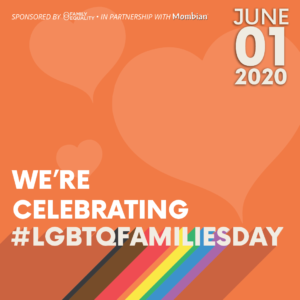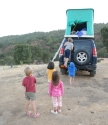
Last December, I was at the San Francisco Recreation and Parks Department tree-lighting ceremony in front of McLaren Lodge in Golden Gate Park. I was there to video my daughter and the theatre company of which she’s a member. Before they went on, however, there was another group — a family of singers. There was the mom and dad, of course, and six or seven kids, and they were performing Christmas carols. They were a regular Von Trapp family.
Except that they weren’t. This family was African-American. Normally, I wouldn’t care, but the reason I remember is that one of the songs they performed made me think about an issue we have in our society — a lack of representation. The song they sang was I Saw Mommy Kissing Santa Claus. Now, the joke behind that song is that, while the kid thinks Mommy is canoodling with Kris Kringle, we all know that it’s just Dad in a Santa suit. Only, what if Santa doesn’t look like Dad? Either the kid would know in a heartbeat that it’s their father and not Santa or that it’s definitely not their dad.
Santa, of course, is just one person and there are bound to be celebrities, real and imagined, who don’t look like each of us. That’s okay, so long as there are others who do. The problem in our society is that folks like Santa all look the same — almost invariably white. Most of the superheroes are white; even the Hulk, when he’s not green, is white.
It doesn’t stop there, of course. Most heroes are not only white, but they’re cisgender, straight, males. In the Disney universe, while the princesses might be the title characters, they are simply there waiting to be rescued by, yep, you guessed it, a straight white male. I’m no expert on the Disney princesses, but Merida, from Brave, was the first one I knew of who didn’t fall into the arms of some guy in order to have a happy ending. And I know a lot of people complained about the movie because of it.
What about all that straightness? Until recently, LGBTQ+ kids watching Disney movies could have easily come to the conclusion that they were completely alone in the world. How is that acceptable?
The long and the short of it is that we need more representation of diverse people in our entertainment, our marketing, and our politicians. Kids need to see more LGBTQ folks and people of color. They need more strong women who are into sports and technology as well as more men who enjoy art and crafts and who aren’t afraid to cry or be scared. Having a more inclusive view of the world is good for everyone.
Around the same time as that tree-lighting, my youngest son’s class at school put on a production of Rudolph the Red-Nosed Reindeer. They got a couple of minutes into it when the kids stopped the show and told their teacher they didn’t like the story. The teacher asked what they wanted to do and they said they wanted to start over. They all ran off-stage, whispered for a minute or two, then came back on to perform Rudolph the Red-Nosed Reindeer — As It Should Have Been. This, of course, was an inclusive production where Rudolph and everyone on the Island of Misfit Toys were celebrated for their differences. My son, who happened to be playing Santa Claus, was not married to Mrs. Claus but to Mr. Claus. It was a subtle touch that, perhaps, I only caught because it was, after all, my kid, but it was great to see these kids having no problem with it, even the two who played Mr. and Mr. Claus.
As for that song, I’m not sure we can fix our view of Santa Claus enough to make it work for everyone, but we can certainly try. And, in general, I think we can all try to be more aware of and demanding of representation — of people of color, of the LGBTQ community, of strong, independent women, of a world where everyone has a seat at the table.
This post is part of LGBTQ Families Day, hosted by Mombian.com.
Tags: equality, LGBTQ Families Day, LGBTQ Families Day 2020, LGBTQFamiliesDay, Racism, Representation

